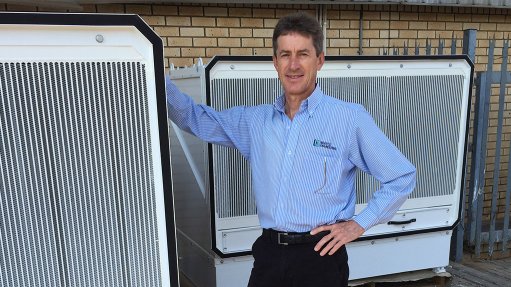
HVAC systems in the military and rolling stock sectors have very specific operating requirements and could include anything from the ability to operate in extreme climates to severe space constraints to ergonomic issues such as low noise tolerance. In addition, there are typically all sorts of the equally demanding technical requirements, such as electromagnetic interference and electromagnetic compatibility requirements, fire and smoke compatibility, shock and vibration resistance, and so on.
Developing custom engineered HVAC systems that meet the stringent requirements of the railway and military sectors is not an easy feat, but one that has enabled Booyco Engineering to participate on the global platform competing against much larger organisations.
“Being competitive in the custom engineered market internationally is hard won territory and is testament to the level of technical expertise and engineering capability that resides in our company,” Jeremy Pougnet, Booyco Engineering CEO, says.
One of the key requirements of the international railway and military markets is that HVAC systems meet key sustainability criteria.
Pougnet says these market sectors not only want “greener” HVAC solutions that significantly reduce energy consumption, but also want systems that adhere to stringent sustainable design and manufacturing practices. These customers assess critical factors such as the total cost of ownership of the final system and that would include the energy cost to drive the HVAC system. Other important considerations are recyclability and the avoidance of the use of “conflict” minerals and hazardous substances.
OEMs also have much shorter cycles in which to drive new technologies from the design stages to final product development and production roll out.
This relies heavily on extensive experience in designing and manufacturing HVAC systems for the railway and military sectors. Significantly, Booyco Engineering has been supplying custom engineered HVAC solutions to the international military and railway sectors for more than 31 years.
This leading HVAC system OEM applies this depth of knowledge in a practical manner that reduces the overall development cycle of new technologies, while mitigating the risk of significant alterations to the prototype before it is qualified.
Computational fluid dynamics software allows engineers to simulate a complex duct network in a matter of hours. The design can then be accurately optimised in terms of pressure drops, air flow distribution and heat transfer.
“Without this software, it would take weeks to build, test and re-test systems to arrive at a result that will probably not operate as optimally as the system using CFD software,” Pougnet says.
In addition, in order to meet the compressed time scales for development different elements of the system have to be designed concurrently, requiring significant interface between the different engineering disciplines. This is considering the integration of electronic and electrical components, while the various mechanical design aspects also impact on one another.
Pougnet says the process also relies on frequent design reviews and multiple iterations of the design. These are supported by rigorous systems that record the next steps to be taken and the closing out of all open actions.
In most cases, the qualification testing of multiple prototypes is very time consuming. As is the case with concurrent engineering, there is an element of risk to conducting multiple and different qualifications tests in parallel.
For this reason, Booyco Engineering has implemented a thorough risk management process, which classifies risk according to the likelihood of occurring and impact. Actions are then immediately implemented to mitigate the consequence of severe risks that may derail new product development.
This level of expertise remains highly sought after by First World defence contractors and the company is completing its third successive contract for military HVAC systems for two of its customers, one in Europe and the other in Southeast Asia.
“Finding optimal solutions for difficult operational conditions is one of our strengths,” Pougnet says. As an example he points to a display screen on the latest military HVAC system that is capable of reliably displaying information even in a minus 40°C ambient environment.
It is this attention to the value added component of its services that has secured Booyco Engineering its position as a leading supplier of HVAC systems.
“Our primary differentiating factor is our responsiveness to customers’ needs, and because we are a relatively small organisation we have the agility to make rapid decisions,” he says.
The future bodes well for Booyco Engineering as it continues to produce high quality bespoke engineered HVAC solutions for the global market.